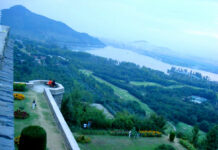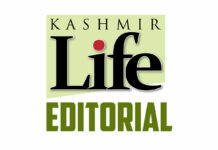J&K and Kashmir especially is one of the fragile ecological zones that has emerged as the new crucible of climate change. Its closed environment, massive dependence on fuel and playing host to huge floating populations coupled with unprecedented biotic interventions for security reasons have added to the precarious nature of the place. Certain things have already suggested a change. The fast diminishing snow lines, fall in the river discharge and a clear shift in weather are some of the indicators suggesting toward a bigger malady that is gradually engulfing the Vale.
In such a situation, various official agencies which should have been hyper-active in identifying and disseminating the vital information are not working up to the mark. State’s Pollution Control Board has for a very long time remained secluded from the basics that it should have upheld for the larger public interest.
At one point of time, it engaged itself with a series of impact studies on the fragile nature of the place. Once they were published, it ceased to walk the talk.
Last time when it was approached to offer the idea of quality of Jhelum’s water, the information was available about four locations till the river entered Srinagar. The fact is that Srinagar is the major pollutant to Jhelum and one of the key factors for frequent gastrointestinal morbidity downstream especially in the Sonawari belt is the tons of pollution that capital city adds on daily basis.
It should have been a regular and daily exercise for the SPCB to sample the river waters at the entry and exit level to offer an idea of the mess that city creates. Had this information been available on daily basis, this could have triggered some pressure on other departments to control and manage the pollution load that is being added. But the absence of this vital activity is a key factor for helping tens of thousands of people living downstream to spend immensely on health issues. Had this information been available on its website as irrigation department is doing about the level of water, this could have emerged a great facility for the people.
Another key concern is the air pollution. Recently when some lawmaker sought information about the level of air pollution in Srinagar and Jammu, it was the Srinagar part that was handwritten – in 21st century. Nobody could make anything out of it.
The Board is increasingly active in industrial areas across J&K. Political intervention is clearly preventing it from acting where it should have normally forced a change. But in areas where politics is not coming to the rescue of small players, Board is playing negatively.
Forests department has a new minister. Pretty controversial for his conduct and delivery, the minister should spear some time to understand how pollution has sneaked into the conduct of the Board. It is high time the institutions that are key to the normality of nature in fragile ecologies like Kashmir are pushed to function and deliver. Other option is to close these boards and outsource pollution monitoring.









